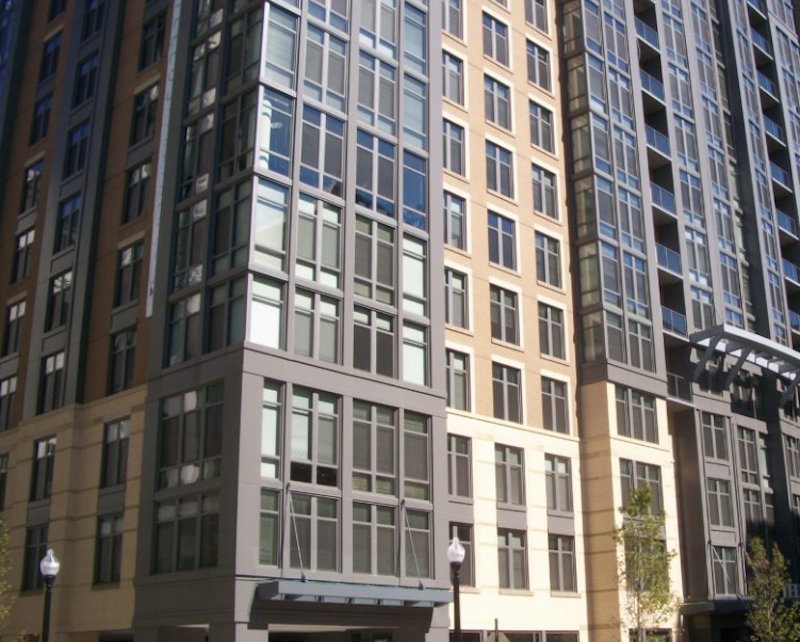In a construction market that has been slowly recovering since the end of The Great Recession, multifamily housing has been the brightest star. The demand for rental housing has been on a steady climb since 2004 (Source: Freddie Mac).

But the demand for rental housing is growing while the income level of renters is falling. Renters need to save money on their housing costs, and the cost of utility bills is increasingly important to renters who can’t afford high utilities.
Introducing EPA ENERGY Star for Multifamily High Rise
The LEED rating system is well established as a way to verify that buildings are designed to environmental standards, and a LEED certification can either compliment other back-checks or stand alone. Developers and local jurisdictions are increasingly open to an alternative approach to validating green building strategies.
One new approach comes from the U.S. EPA, which has introduced a program called the ENERGY STAR Multifamily High Rise (MFHR) Program (New Construction). The program’s guidelines allow developers of multifamily high-rise buildings to earn the familiar and respected ENERGY STAR certification for their buildings.
The MFHR program applies to buildings six stories or higher because buildings under six stories can use the ENERGY STAR Certified Homes Program. Buildings of four to five stories can use the MFHR program if they have central HVAC and domestic hot water, and dwelling units that take up less than 80% of the occupiable square footage of the building. The project must also be registered on ENERGY STAR’s Portfolio Manager, and the developer must track and report energy performance for the first two years, although the building’s performance will not take away the ENERGY STAR certification that it received.
The ENERGY STAR for MFHR program has a narrower focus than LEED, and only considers energy use and hot water conservation. LEED, on the other hand, covers energy usage, water conservation, site development, indoor environmental quality, and materials – all of which provide great environmental benefits.
Renters who are concerned about utility costs may find that an ENERGY STAR certification gives them confidence that the property’s operators are doing what they can to keep costs down – but using it as a back-check on sustainability strategies will only provide a limited view on total environmental impact.
ENERGY STAR for MFHR How-to’s
The first step in developing an ENERGY STAR for MFHR certified building is to become a residential new construction partner by completing an online form on the ENERGY STAR website.
If you are designing your building to follow the performance path, you must show that the building achieves at least 15% energy cost savings over a code minimum ASHRAE 90.1 building through an energy model. If you are following the prescriptive path, there are minimum levels of efficiency that must be met related to HVAC equipment, insulation, doors, and glazing. There are additional requirements related to the HVAC, building envelope, plumbing systems, lighting, and motors.
For both paths, there are prerequisites that must be met, which are like the mandatory provisions of ASHRAE 90.1. A project gets submitted to ENERGY STAR at the close of both the design and construction phases. For the design submittal, you provide the proposed energy model, and testing and verification worksheets. The as-built submittal (or your post-construction submittal) includes an as-built performance path calculator with any changes made since design, testing and verification worksheets, and a photo template, which provides evidence that all requirements have been met in the building. These are submitted to ENERGY STAR and must be verified by either a professional engineer (PE) or a registered architect.
More from Author
Paladino | Jan 10, 2022
The future of regenerative building is performance-based
Why measuring performance results is so critical, but also easier said than done.
Paladino | May 26, 2021
Injecting embodied carbon capability into the integrated design and construction process
Embodied carbon is defined as the carbon footprint of a material, and is expressed in metric tons of CO2e.
Paladino | May 12, 2021
Climate modeling for a resilient business and future
This post explores changes that developers and their teams need to make to their risk and resilience strategies by climate modeling for climate change.
Paladino | Apr 26, 2021
Building performance requirements are coming: Are you ready?
Building Performance Requirements are trending nationwide and are likely coming to a county near you.
Paladino | Feb 8, 2021
Six lessons learned from our first Fitwel Viral Response Module certification
The Fitwel Viral Response Module is one of several frameworks that real estate owners and operators can use to obtain third-party certification for their efforts ensuring their properties are ready for a safer and healthier return to work.
Paladino | Jan 14, 2021
Shift your energy to carbon
Now is the right and necessary time for the commercial real estate industry to shift its environmental strategy from just energy, a carbon contributor, to carbon itself.
Paladino | Nov 13, 2020
5 tips when designing for daylight
Daylight modeling is a tool to examine how daylight interacts with a building, and how that natural light behaves within interior spaces.
Paladino | Jul 16, 2020
COVID readiness: IWBI and USGBC seek to help businesses quantify risk
In an effort to address the risks of COVID-19 at the building scale, USGBC and IWBI have analyzed existing certification guidelines and drafted new, relevant content.
Paladino | Jun 5, 2020
3 strategies to improve the wellness of building systems and gain tenant trust
Three operational issues that must be prioritized for every building in order to achieve tenant trust are air quality/ventilation, relative humidity, and building commissioning.
















